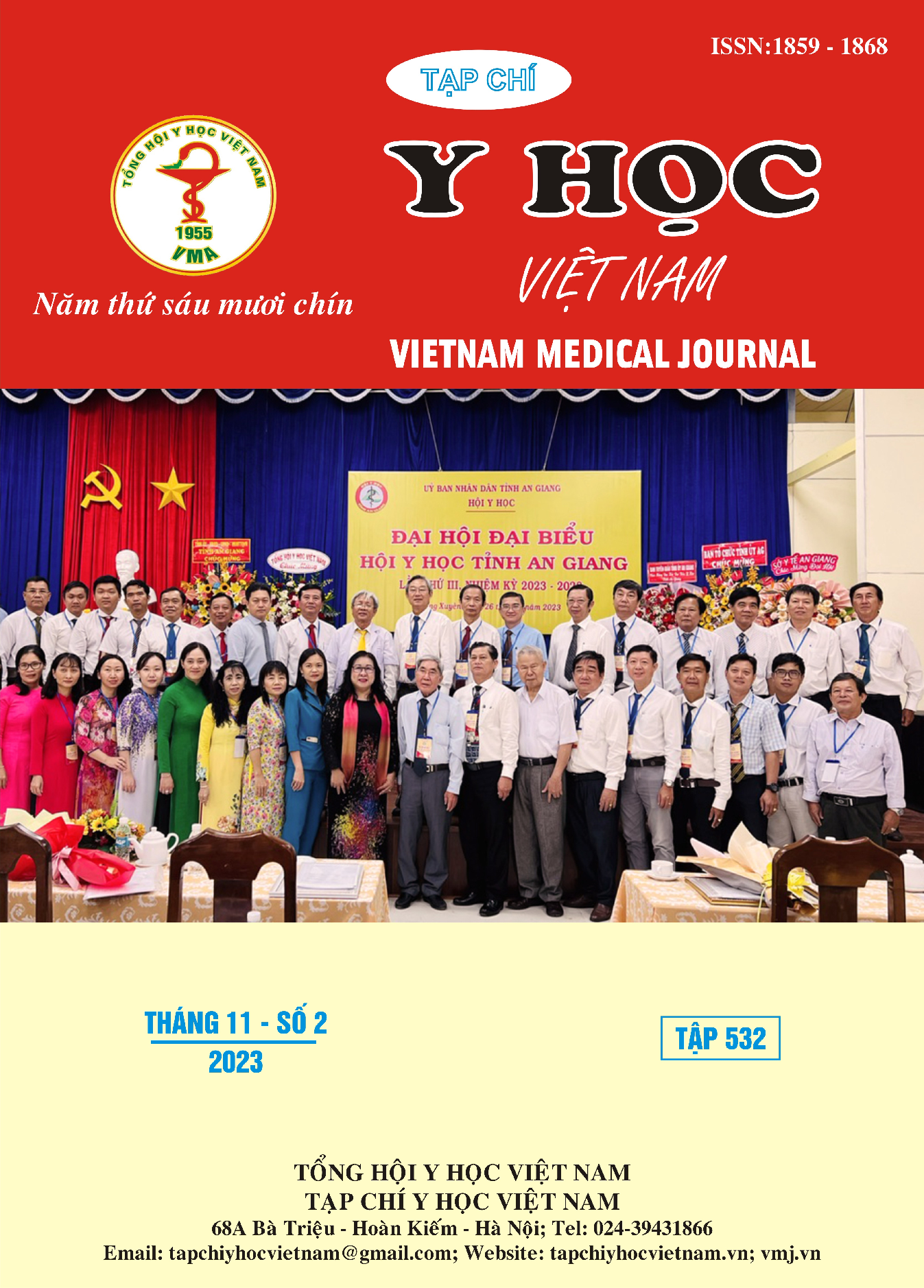STUDYING THE EFFECTIVENESS OF TOPICAL TREATMENT OF CREAM BERBERIN 1% TO CHRONIC WOUND
Main Article Content
Abstract
Objective: Aim of this study was to evaluate the effects of cream Berberin 1% on changes of chronic wound local. Subjects and method: We conducted a
controlled prospective study at the Wound Healing Center of Vietnam National Burn Hospital, from May, 2021 to April, 2022. 60 patients with chronic wounds were divided into two groups (Group A: 30 patients with chronic wounds was dressed by Slivirin 1% and Group B: 30 patients with chronic wounds was dressed by Berberin 1%). We assessed and recorded the chronic wound topical changes and the bacterial species at the chronic wound site at the time of before applying the Silvirrin 1%/ Berberin 1% and at the day
10 and day 20 of studied progress. Results: The progression of chronic wounds in the group B was better than in the groups A: Reduced exudation, inflammation at periwound; increased formation of granulation tissue and epithelial formation. Bacteria found on the wound surface were diverse in types, the highest rate was P.aeruginosa, S.aureus and K. pneumonia.The occurrence of these strains of bacteria decreased over time in both groups A and B. However, at day 20 after treatment, the proportion of positive samples in group A was higher than in group B. Conclusion: Cream Berberin 1% had antibacterial effect and stimulates the process of chronic wound healing better than Silvirin 1%.
Article Details
Keywords
Chronic wound, cream Berberin 1%, cream Silvirin 1%, bacteria.
References
2. Robert N., Keith G.H., Paul M (2014). Clinical challenges of chronic wounds: searching for an optimal animal model to recapitulate their
complexity. Disease Models & Mechanisms 7:1205-1213.
3. Nguyễn Ngọc Tuấn (2008). Đánh giá tác dụng của kem Berberin 1% lên diễn biến vết thương bỏng nông. Đề tài cấp cơ sở Học Viện Quân Y
4. Tuhin K.B. et al (1998), “Biological effects of extract of hunan placenta”, the 9th symposium on medicinal plants, spices and other natural products, Hanoi, Vietnam, 24-29, sep.
5. Phạm Trịnh Quốc Khanh (2009), “Nghiên cứu đặc điểm lâm sàng, chẩn đoán huỳnh quang bằng dung dịch fluorescein 10% và điều trị bằng kem berberin 0,05% trong bỏng bàn tay”, Luận án tiến sỹ y học, Học viện Quân Y.
6. Mustoe T (2004). Understanding chronic wounds: a unifying hypothesis on their pathogenesis and implications for therapy. Am J Surg187:65S-70S5.


